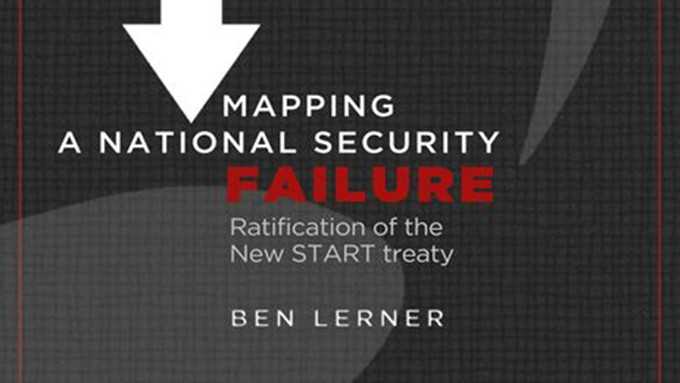Mapping a National Security Failure: Ratification of the New START Treaty

During the course of debate over ratifying New START, several defenses and critiques of the merits of the treaty were articulated. One area that was the subject of considerable attention by treaty skeptics had direct bearing on the premise of the treaty—the extent to which New START was actually effectuating a meaningful reduction in deployed Russian nuclear weapons.
First, though proponents of the treaty claimed that New START would result in a 30% reduction in deployed nuclear warheads from the 2002 Moscow Treaty, the “counting rules” designed to determine whether either nation’s nuclear weapons counted towards the numerical limit were fundamentally flawed. Specifically, Article III Section 2(b) of New START stated that each deployed heavy bomber would count as one deployed nuclear warhead—meaning that irrespective of how many warheads a heavy bomber was actually capable of carrying (six to sixteen nuclear weapons each, by some estimates),[20] New START would count only the bomber as a single deployed nuclear weapon. Such a formulation would allow Russia to substantially move past the 1,550 deployed warhead ceiling. Indeed, Russia clearly interpreted the rules this way—Russian news outlets reported that New START would enable Russia to keep 2,100 strategic nuclear warheads.[21] Though some argued that the United States could theoretically avail itself of this counting rules loophole, Russia’s ongoing drive to modernize its nuclear forces made this counting rule particularly worrisome. President Medvedev announced a new military doctrine early in 2010, with one of its cornerstones being the modernization of its nuclear triad.[22] And as discussed in the Journal of International Security Affairs in 2009, specifically with respect to bombers:
While it has never been the cornerstone of the Russian triad, Moscow’s modernization of its strategic bomber fleet nevertheless continues steadily. Two strategic bombers will be commissioned into the Russian Air Force every three years, according to General Vladimir Mikhailov, the commander of the Russian Air Force.2 Russia has three types of bombers in its fleet, the Tu-160 ‘Blackjack,’ Tu-22 ‘Blinder,’ and Tu-95 ‘Bear.’ The new bombers will be Tu-160s.[23]
Other major loopholes in the New START counting rules included the treaty’s failure to prohibit MIRVed ICBMs (missiles armed with “multiple independently targetable reentry vehicles,” or multiple warheads) and its complete omission of rail-mobile ICBMs as counting towards the treaty’s launcher limits. Some analysts have described the omission of rail-mobile ICBMs as “quite significant”, given Russia’s history of having deployed these weapons and apparent interest in continuing to do so.[24]
Second, the New START treaty did not address tactical nuclear weapons whatsoever, leaving Russia with a considerable advantage over the United States with respect to these types of weapons. Thomas P. D’Agostino, Administrator of the National Nuclear Security Administration, testified before Congress in 2009 that the Russians were thought to hold an advantage over the United States in tactical nuclear weapons by a ratio of ten-to-one.[25] The bipartisan Strategic Posture Commission, in its final report, conveyed its deep concerns with respect to Russian tactical nuclear weapons:
As part of its effort to compensate for weaknesses in its conventional forces, Russia’s military leaders are putting more emphasis on non-strategic nuclear forces (NSNF, particularly weapons intended for tactical use on the battlefield).[26]
…[Russia] stores thousands of [tactical nuclear] weapons in apparent support of possible military operations west of the Urals. The United States deploys a small fraction of that number in support of nuclear sharing agreements in NATO.[27]
…How should non-strategic nuclear weapons be accounted for? The imbalance favoring Russia is worrisome, including for allies, and it will become more worrisome as the number of strategic weapons is decreased. Dealing with this imbalance is urgent and, indeed, some commissioners would give priority to this over taking further steps to reduce the number of operationally deployed strategic nuclear weapons.[28]
- Trump’s Election Was a Win in the Fight to Keep Gitmo Open - January 4, 2017
- NDAA and the Counter-Drone Challenge - December 23, 2016
- NDAA Takes On Counter-Drone Challenge - December 8, 2016
